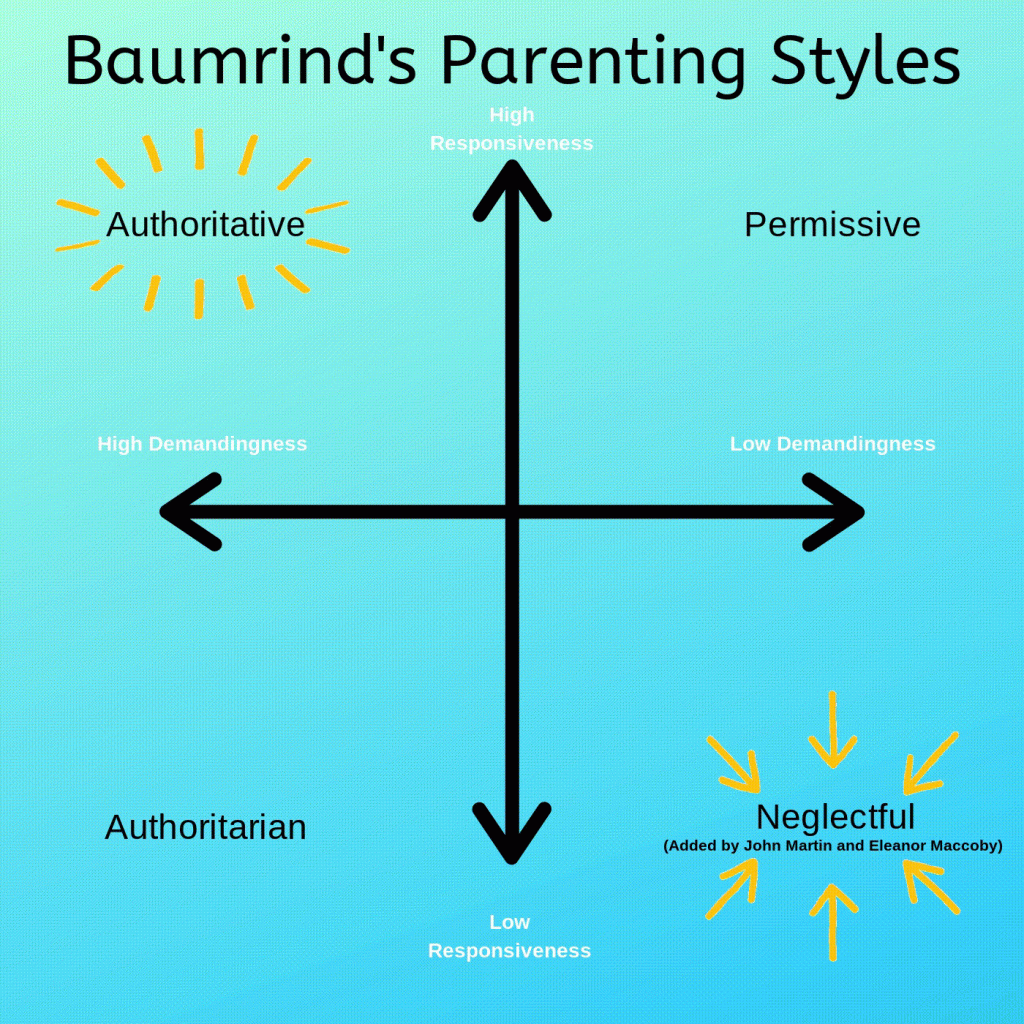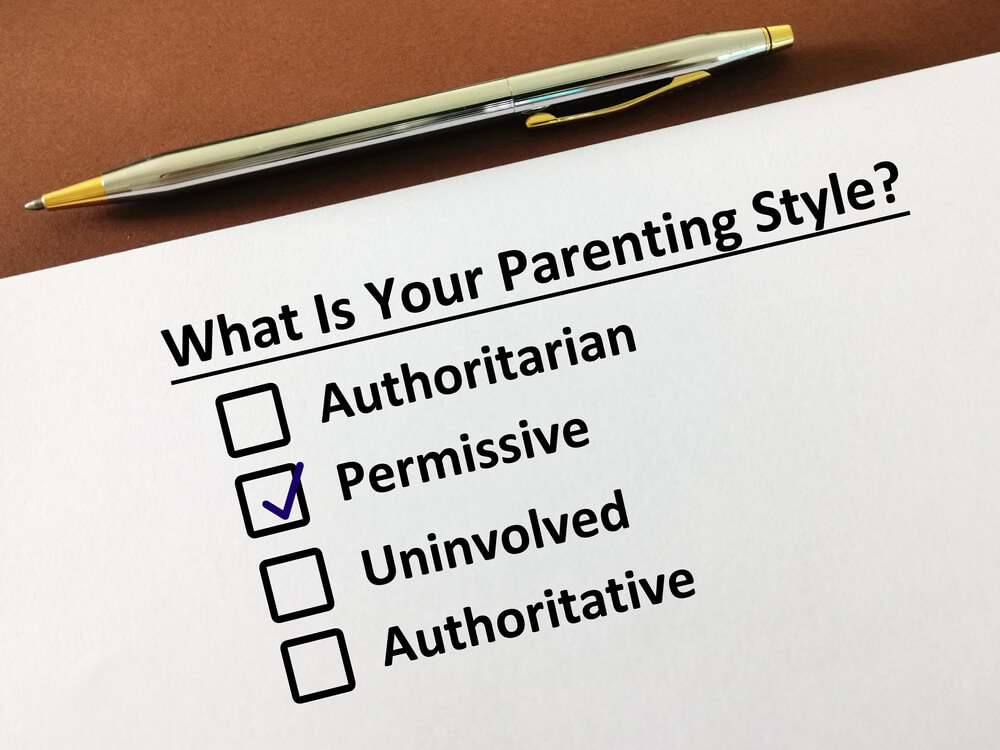What is Permissive Parenting? How Too Much Freedom Can Impact Your Child

Every parent wants their child to feel loved and understood, but sometimes, in trying to give them freedom, boundaries start to fade. This approach is known as permissive parenting, where warmth and openness take center stage, but rules and limits often fall behind.
Understanding how this style works and how to balance it can make a big difference in raising confident, grounded kids.
Contents:
- What Is Permissive Parenting?
- Permissive vs. Other Parenting Styles
- Why People Become Permissive Parents
- How Does Permissive Parenting Affect Kids?
- Pros and Cons of Permissive Parenting
- Signs You Might Be a Permissive Parent
- Better Alternatives to Permissive Parenting: Finding Balance with Healthy Boundaries
- FAQs
What Is Permissive Parenting?
Permissive parenting is a parenting style where love and warmth are abundant, but structure and discipline often take a back seat. These parents are nurturing and supportive, but they tend to avoid enforcing strict rules or consequences. Instead of setting firm boundaries, they might give in easily to keep the peace or out of fear of upsetting their child.
This approach often stems from good intentions. Parents want their children to feel trusted, respected, and free to express themselves. In many cases, permissive parenting grows out of a desire to be the “understanding” parent rather than the strict one.
You might see permissive parenting play out in everyday moments: a child refusing to go to bed on time and the parent allowing it to avoid conflict. Or a teen talking back without facing any consequences. Over time, these small moments can shape habits that make it harder for kids to handle limits, responsibility, or frustration later on.
At its core, permissive parenting is defined by high responsiveness and low demands—a parent who provides plenty of emotional support but few rules or expectations. While this creates a close, loving bond, it can also lead to confusion when children aren’t sure where the boundaries truly lie.
It’s important to remember that being warm and supportive doesn’t automatically make someone a permissive parent. In healthy parenting, love goes hand in hand with limits. Children know they’re cared for, but they also understand expectations.
Permissive parenting, however, tilts the balance too far toward freedom. The result is often a child who feels loved but lacks guidance, structure, and the ability to handle rules both at home and in the outside world.
Permissive vs. Other Parenting Styles
Leremy/Shutterstock
The concept of different parenting styles comes from psychologist Diana Baumrind, who identified four main approaches: authoritative, authoritarian, permissive, and neglectful. Each varies in how much structure and warmth parents offer—and together, they help explain why some kids thrive under certain types of guidance while others struggle.
- Authoritative Parenting: Sets clear rules with warmth and open communication. Parents explain expectations and encourage responsibility without using fear or punishment.
- Authoritarian Parenting: Focuses on strict control and obedience. Rules are nonnegotiable, and discipline is often harsh, leaving kids well-behaved but sometimes anxious or unsure of themselves.
- Permissive Parenting: High in love but low in structure. Parents avoid conflict, rarely say “no,” and often let rules slide, which can make it hard for kids to learn limits or accountability.
- Neglectful (Uninvolved) Parenting: Offers little structure or emotional support. Parents are often disengaged, which can leave children feeling overlooked and lacking guidance.
If we imagine these styles on a chart, permissive parenting would fall in the quadrant marked by high warmth and low control—the loving parent who’s more friend than authority figure. In contrast, authoritative parenting balances both warmth and structure, setting children up for emotional security and independence.

Types of parenting styles
Research by Baumrind found that authoritative parents—those who combine empathy with firm boundaries—tend to raise the most well-adjusted children. They provide both love and structure, helping kids feel secure while learning accountability.
→→→
| Parenting Style | Rules & Expectations | Emotional Warmth | Discipline Style | Common Outcome for Kids |
| Authoritative | Clear and consistent rules that are explained and discussed | High warmth and open communication | Fair and balanced—parents guide, not punish | Confident, responsible, and emotionally secure |
| Authoritarian | Strict rules with little flexibility | Low warmth; parents expect obedience | Harsh or controlling; punishment-focused | Obedient but may struggle with self-esteem or independence |
| Permissive | Few rules or boundaries | Very high warmth and responsiveness | Rarely enforced consequences | Creative and expressive but may lack self-control or responsibility |
| Neglectful | Minimal to no structure | Low warmth and limited involvement | Little discipline or guidance | Struggle with emotional connection and self-regulation |
Read more: What Are the 4 Types of Parenting Styles and Which One is Right for You?
Why People Become Permissive Parents
Most parents who lean toward permissive parenting do so with love and the best intentions. Often, it’s not about ignoring discipline. It’s about wanting to build a stronger emotional bond with their child. Many parents remember growing up under strict or authoritarian parents and want to give their children a gentler, more understanding experience.
Sometimes, permissive habits develop gradually. A parent might give in “just this once” to avoid a meltdown or argument. Over time, those small moments of leniency can become the norm. Parents may start equating boundaries with conflict and avoid setting boundaries and limits altogether to keep the peace.
Life stress can also play a big role. When parents are juggling work, household responsibilities, or other children, enforcing rules consistently can feel exhausting. It may seem easier in the moment to say yes rather than hold firm on bedtime, chores, or screen time.
And in today’s world, where mental health and emotional openness are top priorities, some parents fear that being too firm could harm their child’s confidence or relationship with them. They may overcompensate with freedom, believing that constant support and understanding alone are enough.
At its heart, permissive parenting often comes from a place of love, but even the most well-meaning parents can set clear boundaries that lead to confusion for both parent and child.
How Does Permissive Parenting Affect Kids?

FamVeld/Shutterstock.com
Permissive parenting has a strong influence on child behavior, especially when it comes to self-discipline and respect for boundaries. Without consistent expectations, kids may test limits or struggle with frustration when they don’t get their way.
In the short term, kids raised with permissive parenting often appear confident and creative. They’re comfortable expressing themselves and are rarely afraid to share opinions or emotions.
But without consistent expectations, they may have a harder time managing frustration, delaying gratification, or accepting responsibility for mistakes.
Here are some common effects parents might notice:
- Difficulty following rules or routines, especially at school or in group settings
- Low frustration tolerance—getting upset easily when told “no” or when things don’t go their way
- Trouble taking responsibility for their actions or choices
- Struggles with self-discipline, like managing screen time or completing chores without reminders
- Emotional ups and downs, sometimes linked to anxiety or insecurity when boundaries are unclear
Teachers often notice these challenges first. A child might talk back when corrected, struggle to follow directions, or become easily frustrated when things don’t go their way. Teens may test boundaries more frequently, pushing limits at home, at school, and online.
As they grow older, these patterns can affect relationships and decision-making. Young adults raised with few boundaries may struggle with authority figures, personal accountability, or time management. In some cases, they may even seek out external structure, like strict jobs or controlling relationships, because it’s what they’ve been missing.
Pros and Cons of Permissive Parenting
Like most parenting styles, permissive parenting has both strengths and challenges. Many parents choose this approach because they value connection, open communication, and emotional safety. But when structure is missing, even the most loving intentions can lead to problems with discipline and responsibility over time.
→→→
| Pros of Permissive Parenting | Cons of Permissive Parenting |
| Children often feel deeply loved and emotionally supported | Kids may struggle with self-control or understanding limits |
| Encourages creativity, independence, and free expression | Lack of structure can lead to poor time management and low responsibility |
| Builds a close, trusting relationship between parent and child | Children may resist authority or struggle to follow rules outside the home |
| Creates an open environment for communication and honesty | Over time, constant leniency can cause confusion or emotional insecurity |
| Reduces conflict in the short term, keeping home life calm and peaceful | Without consequences, kids may not learn accountability or resilience |
| Helps children develop confidence and comfort in expressing feelings | Teens may become impulsive or entitled if they’re used to always getting their way |
While permissive parenting often stems from love and empathy, finding the right balance between warmth and structure is key. Kids thrive when they know their parents’ love is unconditional—but also when they understand where the boundaries are.
Signs You Might Be a Permissive Parent

Yeexin Richelle/Shutterstock
Many parents don’t realize that small shifts in daily routines or discipline can greatly influence their child’s behavior and emotional well-being. These can be arguments that end in negotiation, chores that never get done, or rules that keep bending “just this once.” Recognizing these patterns is the first step toward creating a healthier balance between love and limits.
Here are a few common signs that might sound familiar:
- You often avoid saying “no” because you don’t want to upset your child or cause an argument
- Rules change depending on your mood or energy level, making it hard for kids to know what to expect
- Your child rarely faces consequences for broken rules or disrespectful behavior
- You value your child’s happiness over setting boundaries, even when limits would be better in the long run
- Your teen treats you more like a friend than a parent, sharing openly but not always respecting authority
- Chores, homework, or screen time limits often become points of negotiation rather than clear expectations
- You step in to protect your child from discomfort, even when small struggles could teach them responsibility or resilience
If several of these sound familiar, it doesn’t mean you’re doing anything “wrong.” Parenting is complex, and permissive patterns usually grow out of love and good intentions. The goal isn’t to swing in the opposite extreme—it’s to find a middle ground where your child feels supported and guided.
A helpful way to reflect on your parenting style is to ask yourself:
- Do I sometimes avoid discipline to keep the peace?
- Have I set consistent expectations that my child can rely on?
- When my child breaks a rule, do I follow through with consequences or let it slide?
These reflection questions can help you identify small shifts to make, bringing more balance into your parenting approach without losing the warmth and trust you’ve built.
Better Alternatives to Permissive Parenting: Finding Balance with Healthy Boundaries
If you recognize some permissive habits in your home, don’t worry—you’re not alone. Many loving parents fall into this pattern because they want their children to feel understood and emotionally safe. The good news is that small, consistent changes can help you bring more balance without losing that closeness.
The goal isn’t to become strict or controlling. It’s to blend warmth with structure—an approach often called authoritative parenting. This balanced style gives children the emotional safety they need while teaching accountability, respect, and independence.
Start by setting clear, realistic boundaries that your child can understand. Explain why rules exist rather than demanding blind obedience. For example, instead of saying, “Because I said so,” you might say, “We turn screens off after dinner so your brain can rest before bed.” Kids respond better when they understand the reason behind a limit.
Consistency is key. When rules change from day to day, children learn to test boundaries. But when you calmly stick to your expectations—like bedtime, chores, or device limits—they begin to trust that your word means something.
Encourage your child’s voice, too. Involving them in decisions helps build cooperation. You can say, “You can choose whether to do homework before or after dinner, but it needs to be done by 7 p.m.” This gives them autonomy within boundaries, which helps them practice responsibility and decision-making.
At the same time, make sure your home still feels like a safe place to express feelings. If your teen breaks a rule or lashes out, avoid reacting with anger. Instead, guide the conversation toward understanding and accountability: “I can tell you’re frustrated, but yelling isn’t okay. Let’s talk about what’s really bothering you.”
Related: How to Raise a Well-Behaved Child Without Suppressing Their Personality?
Monitoring Online and Offline Life Without Losing Trust
In today’s world, boundaries extend beyond curfews and chores. They also include screen time, online activity, and digital safety. Many kids spend hours on their phones, which can make it hard for parents to know what’s really happening in their child’s day.
That’s where tools like Findmykids can make a real difference. The app lets parents understand their child’s daily routines and whereabouts, offering peace of mind without being intrusive. You can see if your child got to school safely, how long they’ve been online, or whether they’re spending too much time on social media.
With Findmykids, parents can:
- Track their child’s real-time location and routes throughout the day
- See app usage statistics and screen time patterns
- Get notifications when their child arrives at or leaves specific places (like school or home)
- Listen to ambient sounds around the device if something seems off
- Chat with their child right in the app for quick, safe communication.
When used with open communication, Findmykids can help families build healthy boundaries around technology and independence. It allows parents to stay informed and involved while still giving kids space to grow. Think of it as teamwork—where safety and trust go hand in hand.
Try Findmykids today and make digital parenting simpler, safer, and more connected!
Raising Independent Kids with Love and Limits
Parenting isn’t about getting everything right—it’s about learning, adapting, and leading with love. If you’ve noticed signs of permissive parenting, remember that change starts with awareness. Children need both emotional warmth and clear boundaries to feel secure and grow into responsible, confident individuals.
By staying consistent, explaining rules with empathy, and keeping communication open, parents can guide their kids without resorting to harsh discipline or endless negotiation.
Apps like Findmykids help your family stay safe and connected, giving parents confidence and kids a sense of freedom. The app lets you stay aware of your child’s location and screen time while respecting their privacy, supporting a healthy balance of freedom and safety.
The best parenting style isn’t overly strict or overly lenient—it’s calm, connected, and rooted in care.
FAQs
What is permissive parenting?
Permissive parenting is a style where parents are warm and loving but set few rules or limits. They often avoid conflict and prioritize their child’s happiness over discipline.
What is a real-life example of permissive parenting?
Permissive parenting examples include letting their child stay up as late as they want, skipping homework, or spending hours on social media because parents “don’t want to argue.”
What happens to the children of permissive parents?
Children raised with few boundaries often have high self-esteem and creativity, but they may also face challenges with authority, frustration, and self-discipline.
What are the 4 styles of parenting?
Psychologists often categorize parenting into four styles: authoritative, authoritarian, permissive, and neglectful.
Cover image: Nicoleta Ionescu/Shutterstock
Проверьте электронный ящик




















